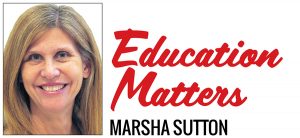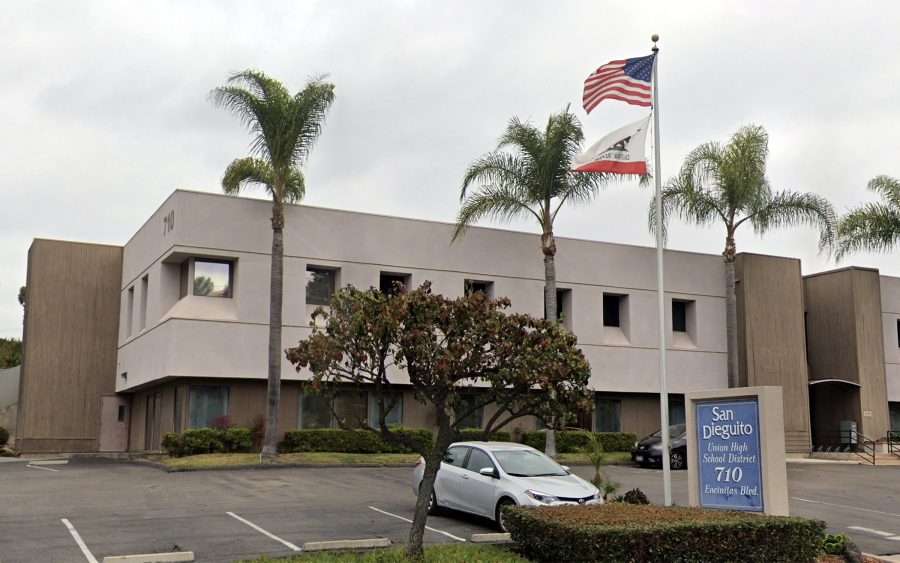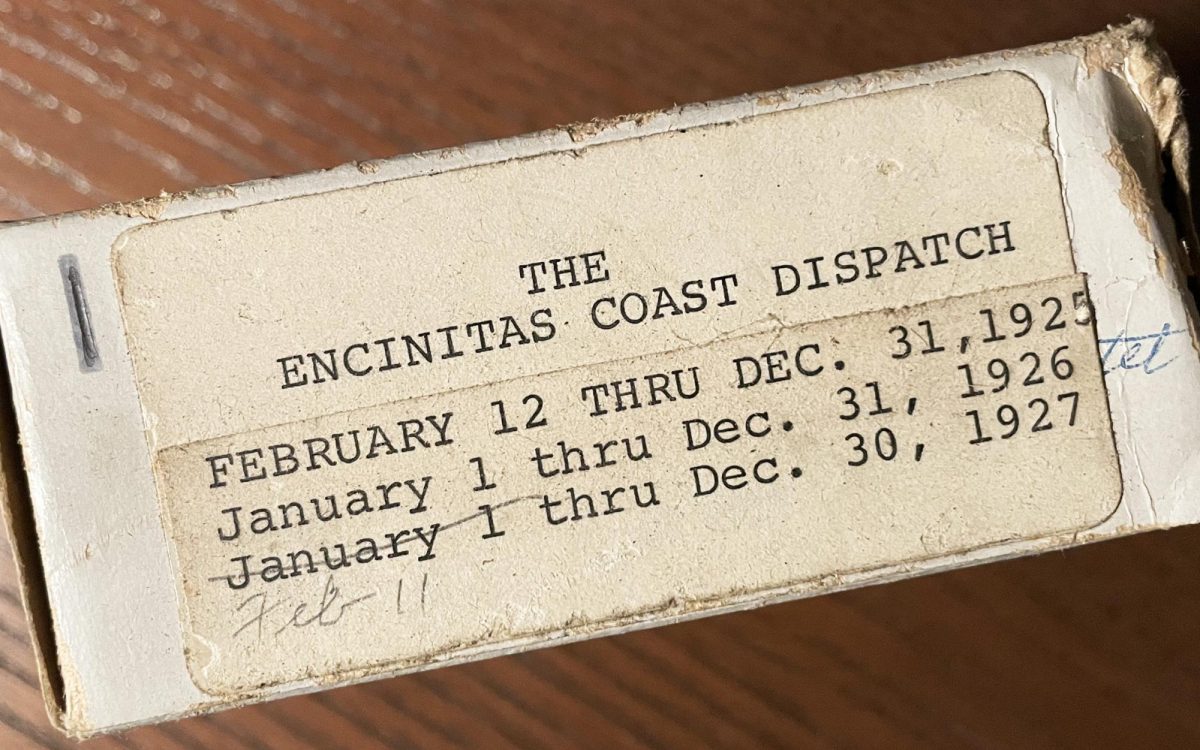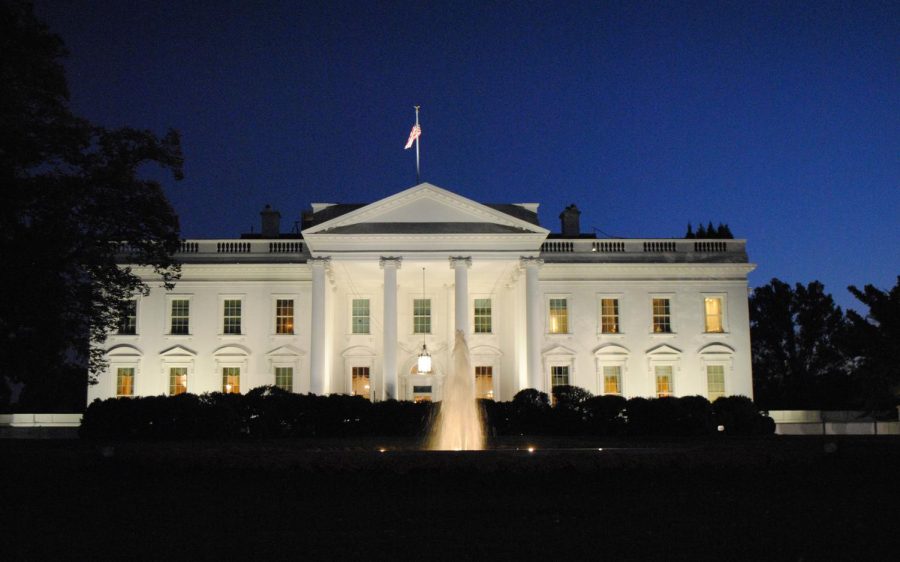A multiyear agreement between the San Dieguito Union High School District and the National Conflict Resolution Center, extending from January 2024 through June 2026, was approved by the school board at its Oct. 26 board meeting.
District Superintendent Anne Staffieri introduced the item, saying there’s a need to enhance inclusion and belonging in support of academic success, through the training, education, prevention and support services that the NCRC can provide.
“We are looking for sustained change in our culture to become more healthy and increase compassion and kindness,” Staffieri said, addressing the board.
The initiative is named One San Dieguito.
 Steven Dinkin, president of the NCRC since 2003, noted the level of tension and division in today’s school systems, saying to the board, “We see conflict, but we’re seeing it more in the K-12 sector than any other segment of society.”
Steven Dinkin, president of the NCRC since 2003, noted the level of tension and division in today’s school systems, saying to the board, “We see conflict, but we’re seeing it more in the K-12 sector than any other segment of society.”
He said the initiative will permit the NCRC to work with the district to reduce the level of tension and dissension that have impacted students, teachers, and the community, and will focus on several areas:
The bystander challenge, which focuses on how to turn a bystander into an upstander, someone who will speak out when they see or hear wrongdoing.
Inclusive communication.
Restorative practices and how to restore harm that’s been done.
Focus on teams and what it means to belong and be a team — whether it’s the drama club, a sports team, or any other student club or group — and when it means standing up for what is right.
“We have a lot of skills to teach and a lot of strategies, but it needs to be a true partnership,” he said.
In an email, Dinkin said, “There is a lot at stake. I am encouraged by how committed the superintendent is to this work. With her leadership and our expertise, I believe we will have a significant impact.”
Budget
Implementation of One San Dieguito will cost more than $500,000.
More than $390,000 will come from the district’s general fund and will be allocated in portions over three fiscal years. The NCRC will kick in $125,000 as part of funding received from the California Department of Health and Human Services.
Because the funding the district is allocating was listed on the Oct. 26 agenda down to the exact dollar amount — $80,536 from January 2024 to June 2024, $153,354 from July 2024 to June 2025, $158,017 from July 2025 to June 2026 — I was curious how those numbers were calculated with such precision.
“It is a projected budget based on fixed costs and cost of living salary increases over the 2.5 years,” Dinkin said. “We probably could have rounded the numbers but we just submitted the budget as is.”
The funding contract covers full-time NCRC staff for a period of 30 months: January 1, 2024, through June 30, 2026, he said.
Staffieri, through a district spokesperson, said in an email that the district negotiated pricing for the multiyear contract in consultation with the NCRC, and the amount was determined “based on the needs of our community and scope of work we identified … to cover the breadth of training programs and resources that will be made available.”
Trustee Michael Allman, who has traditionally been frugal about spending district money, was enthusiastic about the program.
He said he supports the NCRC initiative and approves of the district’s $390,000 expenditure, over three years, because it provides a consistent message and will be conducted by professionals.
“The NCRC has helped more than 20,000 clients over 40 years to improve interpersonal and working relationships,” he said. “By consolidating all of this work under one experienced provider, our district can assure consistency in messaging and implementation across all of our schools.”
The district has too many “disjointed initiatives,” Allman said. “In my vision this replaces everything.
“We spend too much time talking about behavior, hate, discrimination, etc., instead of education. If we can solve the ‘get along’ piece, we can focus where we should be.”
The cost is well worth the money “if it succeeds, which I am hopeful it will,” he said. “I think it is worth a try. I look forward to a long and effective relationship with the NCRC.”
Sense of belonging
“Like many districts within our region and across our country, we have experienced a heightened sense of polarization and seen an increase of hate-based incidents,” Staffieri said. “We in SDUHSD have also seen a steady stream of transition of leadership in recent years, which has left us in need of a clear path forward.”
Dinkin said the NCRC had initially been referred to the district through the County Office of Education more than a year ago, and he had been in contact with some of the district’s associate superintendents before Staffieri was hired.
Stafffieri said in the three months she’s been at the helm of SDUHSD, she’s searched for a plan that provides a sustained structure to address the division and acrimony that the district has experienced in the past few years.
This search resulted in the One San Dieguito Initiative.
Staffieri outlined how she expects the initiative will proceed.
“The first thing NCRC will do is help us identify the concerns and interests of our district’s many stakeholder groups to ensure our students, families, staff and the community have buy-in as we work to become healthier as a community.
“Based on those findings, NCRC staff will train administrators, staff and students on skills that have been shown to improve communication, build culture and help resolve conflicts more effectively.”
The training, she said, will “increase our ability to communicate across our differences more effectively and with respect, and learn how to intervene effectively as upstanders when we see or hear behaviors that are inappropriate and potentially harmful.”
One focus will be on sports teams and student organizations “to build a culture of tolerance to reduce incidents of bullying and targeting.”
Regarding the NCRC’s restorative practices, she said it “can hold students accountable for the harm they cause, thereby reducing the chance for escalation or continued incidents.”
Antisemitism
The latest source of disharmony in the district has been antisemitism, particularly since the Oct. 7 Hamas atrocities in Israel.
Allman, in his board report, made it clear where he and the district stand on the matter.
He called the terrorist attack by Hamas on innocent civilians in Israel horrific, barbaric and reprehensible, and said, “I stand with Israel and the Jewish people around the world.
“I’d also like to be clear that our school district stands with Israel. We will not tolerate antisemitism. And anti-Zionism is antisemitism.”
Support in the room for Israel was clear from public speakers’ comments and audience reactions.
Allman has often referenced a November 2021 resolution passed by the school board titled “Resolution Addressing Antisemitism and Affirming the Value of Jewish Students, Faculty, Staff and Families.”
The resolution “denounces the rise in antisemitic rhetoric and hate-motivated crimes and incidents that denigrate Jewish students and staff in the communities served by SDUHSD” and affirms the rights of Jewish students, faculty and families.
It also states that only unbiased and politically neutral classroom materials may be used when covering controversial topics with students.
Only two of the five board members in 2021 currently sit on the board — Allman, who supported the resolution, and Katrina Young, who abstained.
Some have claimed a school district has no business taking a political stand in support of Israel. But they are wrong.
“What should be core to the mission of any school is to not only provide their learners with moral clarity but to provide them with the facts about world events,” said Sara Brown, regional director of San Diego’s American Jewish Committee.
“Standing with a nation that was attacked by savage terrorists should not be a difficult task for a school system. Standing with Israel does not mean standing against Palestinians. But it does mean standing up to the brutality of Hamas after they perpetrated the largest antisemitic massacre since the Holocaust. The children in our schools should know there is a difference.”
When Jewish students in any school system are harassed and targeted with antisemitic actions, slogans, words or graffiti, it is indeed a school district’s duty to publicly support those students.
The line between anti-Israel and anti-Jewish speech has always been thin, but it is now nonexistent. Jewish students feel threatened as anti-Zionist rhetoric has crossed over into blatant antisemitism.
This is not a matter of staying in one’s lane. This is the school district’s lane, to defend and affirm the rights of a segment of its student population under attack.
With the NCRC’s help, let’s hope the One San Dieguito Initiative lives up to its promise to lower the temperature in the district and the greater school community, and find a way to help all players treat one another, even when opinions and beliefs are disparate, with respect.
Marsha Sutton is a local education journalist and opinion columnist and can be reached at suttonmarsha[at]gmail.com.
Columns represent the views of the individual writer and do not necessarily reflect those of the North Coast Current’s ownership or management.
The North Coast Current welcomes letters to the editor and longer commentaries.






